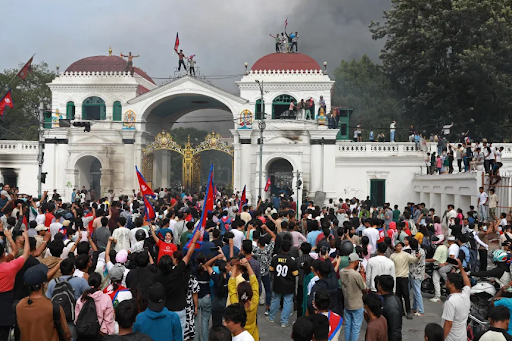
To the complete surprise of millions of Nepalese citizens, Prime Minister K.P. Sharma Oli ordered a nationwide ban on 26 of the most widely used social media platforms, including Facebook, Instagram, and YouTube, according to The New York Times. Following the mandate, on the morning of September 8, thousands of people took to the streets of Kathmandu, the capital city of Nepal. Prominently led by Gen-Z, the protesters destroyed and vandalized the city. Despite efforts from the police to subdue the mob using batons, rubber bullets, and water cannons, the protesters would make it inside the Nepal parliament grounds, where they would burn down many of the offices and government buildings within. The aftermath of the situation has left 19 people dead and around 200 injured, per The Guardian.
So what caused the ban in the first place? Well, the government outlawed a handful of social media platforms because they did not register with Nepal’s Ministry of Communications and Information Technology, according to the BBC. Specifically, they did not comply with the Overview of Directives for Managing the Use of Social Media, 2023 order. In short, this mandate is a list of requirements that every platform has to adhere to in order for it to be accessible to the public. As aforementioned, sites such as Facebook, Instagram, and Youtube were also banned alongside X, Snapchat, and WhatsApp because they did not register with the guidelines before the deadline.
Notably, TikTok, one of the world’s biggest social media platforms, was absent from the full list of 26 banned websites. This is because in 2023, TikTok ran into the same problem that they are experiencing right now in Nepal; they failed to comply with the social media regulations under the same exact order. At the time, the government’s reasoning behind their decision was that TikTok “was disrupting social harmony, goodwill, and flow of indecent materials,” according to NPR. As a result, the platform was banned until 2024 when ByteDance, the parent company of TikTok, came to an agreement with the Nepalese government, allowing for the ban to be lifted. Conversely, the 26 currently banned websites didn’t have to agree to Nepal’s social media guidelines in order to be unbanned. This is because the public forced the government’s hand through major backlash and violence. Fearing more damage, they removed the ban in order to stop the chaos.
What other factors have led to the protests in Nepal? Looking at the current situation, it’s easy to say that the social media ban is the de facto number one reason why the citizens of Nepal have decided to protest, but that’s only partially true. For some time now, the people have been fed up with the current government situation. According to Reuters, many were angered with both the political and economic corruption going on within the nation.
Starting with politics, Nepal has had an ongoing struggle with their political order. According to the Carnegie Endowment for National Peace, there have already been 10 cases of corruption in the form of embezzlement, frauds, and scams by bureaucrats, ministers, and the prime ministers this year. On top of this, Prime Minister K.P. Sharma Oli has been largely criticized for the lack of economic progression. In recent years, Nepal has had a relatively slow economic growth, increasing only 5% over a decade. As a result the gross domestic product per capita of the nation has been around $1372 US dollars, which has led to many issues such as poverty and unemployment. Because of this, Nepal, along with a few other nations, have been classified as a Least Developed Country by the United Nations, meaning that they are among the lowest income countries in the world. Both of these factors have severely impacted Nepal’s society as a whole.
The protests we saw in Nepal demonstrated the line between personal freedom and government control. Whether or not the whole situation was justified is debatable, but for Nepalese citizens, this was a major success to them. Not only were they able to protect their rights to expression, but they also overthrew the government they despised. As a result of the protests, Sushila Karki became Nepal’s first female Prime Minister, with K.P. Sharma Oli stepping down from his position due to increasing pressure from the public. The future of Nepal is still very uncertain, but maybe this is a chance for them to turn a new leaf and start changing for the better.


